“Print” Architecture with AR
|
WHAT This thesis is trying to study how to build up the architecture with hands and traditional tools by using AR technology providing accurate guide line and try to apply AR into the way of making of architecture and test the new ways of making architecture. The problem focuses on how to use AR technology to construct buildings accurately with complicated geometry in rural area, where there is no advanced technology, such as 3D printing, robot and the workers are not well educated to read the drawing information. Fig. 1 Construction with AR WHY Every building starts from the way how we utilize the material around us and how we put the material together. We use the material and tools to materialize our design in our mind. We need to know the property of the material and try to take advantage of its property and build it up. And the medium for constructing the buildings is changing time by time. First, people tried to build up their house by laying up the branches in the woods and stacking up the stone. They did it without experiences and just saw what happened in the nature and imitate it and materialize it for their own purpose. Later, they invented some tools and knew some property of material and began the journey of carpenter and built the buildings according their previous experience. And when the drawings appeared, everything changed. Drawings became the media to cover all information of architecture. Carpenter began constructing the building according to drawings. However, everything was still limited because we needed to set out drawing the physical world. At this moment, we materialize our world through drawings and measurement and accurate setting out. This was the time that we began accurately built our buildings. However, it was really hard to record free form 3D information in the architecture, and all the things here was 2D records. When it comes to digital age, computer software takes a great expression of 3D form in its Data. And free form for production record it is not a problem. And 3D printing techniques appear and solve the problems how to translate the 3D form in computer to physical world directly. However, it is limited by the machines’ sizes and particular materials, and in some developed area, it can not provide this kind of technology. What if human can do the precise work like 3D printing machines? It can escape out of the limitation of the machines size and special-use materials and reduce the costs of the process. And it also offers a great opportunity to construct complicated architecture accurately in rural area. And Augmented Reality Technology can solve this can of problems. What we can translate the buildings out of computer or paper or models are guild lines. We need to set out in our physical world just like what I mention before. And these setting lines can be appeared clearly in AR machine which is worn before our eyes. The virtual guide line can fixed with the physical world XYZ to make sure it has actual same sizes or scales to fit the physical world. And people can follow the AR systems’ guide line to print our project in our computer which means we do not need an expensive machine to build our buildings accurately and we do not need to build our codes every time for building our buildings. What we need is just overlaying the predesign view with the physical world and build our world with our hands with the AR technology. It also allows us to have various joints in our project, not just printing metal, plastic and powder. METHODS This thesis starts from how to utilize the AR technology as guide line to build up the buildings. On the first stage, I will try to lay up the brick according AR guide lines and test its accuracy of its application. And then try to build up more and more complicated form later. Schedule Phase 1
Fig. 2 Traditional Brick Craft Fig.3 Gramazio & Kohler / ETH Zurich
Phase 2
Background Site: Rural Area without advanced industrial processing technology, such as robotic arms, CNC machine, Laser Cut Machine and etc. Purpose: Using Local traditional technique and inexpensive material to construct the Landmark Pavilion which has complicated double-curved surface, such as community Center. Material: Bamboo, inexpensive, tube shape, excellent bending competence Reason: Local Builder can not understand the professional drawing information, Fig. 4 Design Flow
Fig. 5 Bamboo Tea House, Wang Shu Studio Phase 3
Fig. 6 Greg Lynn Form @Copyright Precedent Study STIK Pavilion – Obuchi Lab Fig. 7 Purpose of STIK Fig. 8 STIK Pavilion – Obuchi Lab
3D Setting Out System – Projector and Scanner
Fig. 9 Scanner and Projector Systems Fig. 10 Projected Guide Image and Chopstick Print Machine
Bibliography Picon, Antoine. Digital Culture in Architecture: An Introduction for the Design Professions. Basel: Birkhäuser, 2010 Reiser, Jesse, and Nanako Umemoto. Atlas of Novel Tectonics. New York: Princeton Architectural Press, 2006. Frampton, Kenneth. Studies on Tectonic Culture: The Poetics of Construction in Nineteenth and Twentieth Century Architecture. Cambridge, MA: MIT Press, 2001 Fabio Gramazio, Gramazio & Kohler, Matthias Kohler. Digital Materiality in Architecture. Springer, 2008
|
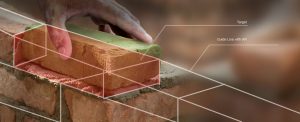
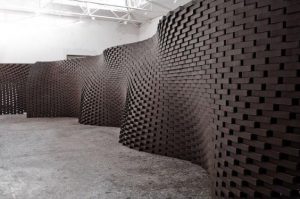
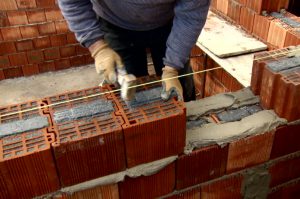
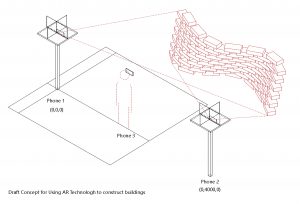
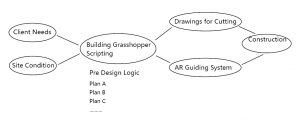
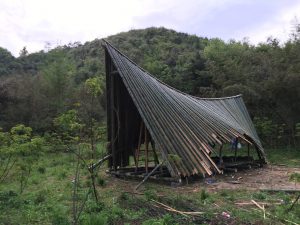
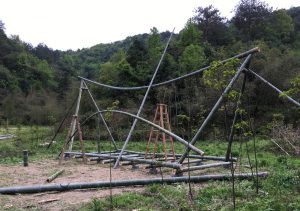
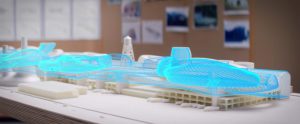
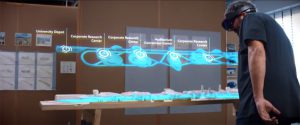
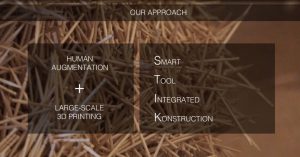
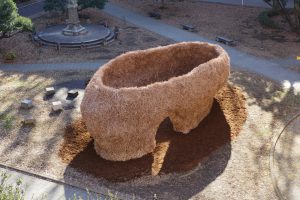
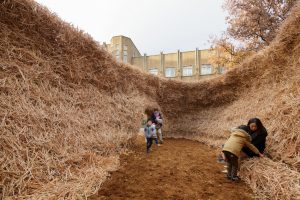
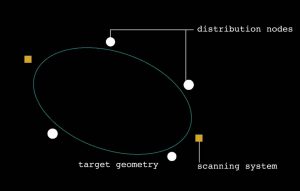
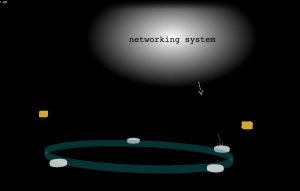
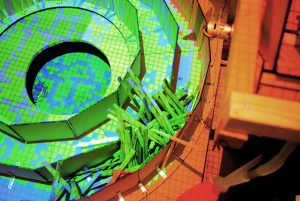
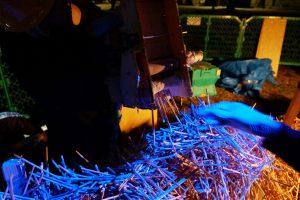
One Comment